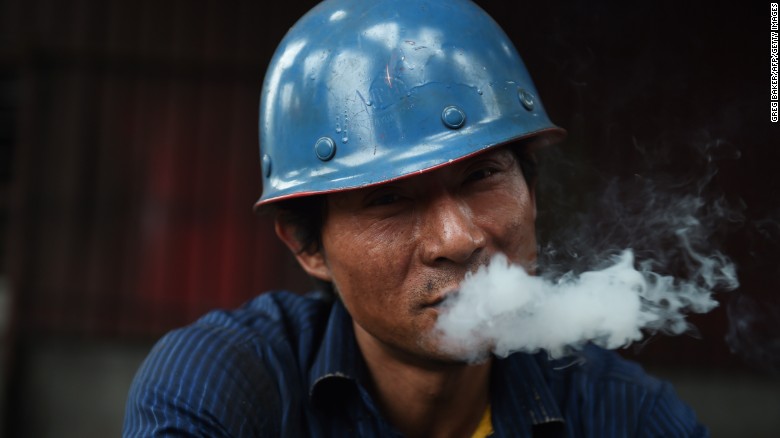Being the country that smokes the more cigarettes than anywhere else in the world the government is implementing new laws to curb the huge smoking trend. The smoking ban in China introduces tough new policies on smoking indoors that will roll out across the Chinese capital on Monday, with lighting up now prohibited in all offices, shopping malls, restaurants, bars and airports. Many outdoor public places such as the areas outside kindergartens and hospitals will also be required to be smoke-free. This policy is soon expected to implimented all over China including Zhuhai. Businesses and institutions that flout the law will face fines of up to 10,000 yuan ($1,600) and repeat offenders could have their licenses revoked.
Here’s five things to know as China battles its “smoking dragon.”
1) It’s not the first ban
It’s not the first time Beijing has tried to tackle its smoking problem — a previous ban launched in 2008 was widely ignored. After closing them with great fanfare, the airport quietly reopened the smoking rooms in its terminals. However, unlike previous efforts, this law has teeth — flouters will face stringent fines. Individuals must pay 200 yuan ($32) (up from 10 yuan ($1.60)) and businesses risk a penalty of up to 10,000 yuan ($1,600). Anyone who breaks the law three times will find themselves named and shamed on a government website. Schwartländer at the WHO says effective enforcement in a city the size of Beijing will be a “colossal task” but the law “deserves to be regarded as a major step forward in the battle against the smoking dragon.”
2) It’s popular and cheap
China is home to some 300 million smokers and some four million live in Beijing. More than one in every three cigarettes in the world is smoked in China. And those cigarettes are cheap — as little as $1.50 for a popular brand like Zhongnanhai. According to the Tobacco Atlas, 26% of the price of a packet of cigarettes is tax, compared with a WHO benchmark of 75%. The China National Tobacco Corp makes one third of the world’s cigarettes and is a state-run monopoly responsible for 3.6 million farmers, four million tobacco retailers and half a million related employees. Health authorities have, until now perhaps, been reluctant to take on the interests of a giant industry.
3) It’s worse than pollution
Northern China’s smog-ridden skies have been linked to 1.2 million premature deaths a year but smoking is arguably a far more pressing health problem. According to the WHO, the city’s concentration of particulate matter smaller than 2.5 micrometers — known as PM2.5 — can often reach 500 or more. While this dwarfs the WHO’s recommended exposure of below 25 — the smoke from just three cigarettes burning in a restaurant can result in a level of 600.
“The smoke from 20 or more smokers, which is not unfeasible in a crowded bar or restaurant, will result in a PM2.5 level that will be off the chart,” says Schwartländer, writing in The Lancet.
4) Cigarettes are social currency
Smoking is a handy icebreaker in China, a way to greet someone and few interactions aren’t made easier by offering a cigarette. Until an edict by President Xi Jinping in 2013, it was common for government officials to have a cigarette in hand while performing their public duties. Chairman Mao Zedong and paramount leader Deng Xiaoping were renowned smokers. While the new ban will limit tobacco advertising, it might already be too late for the next generation. In 2013, a WHO survey found that among five to six year old children, almost nine in 10 can recognize at least one brand of cigarettes and one in five expect to be smokers when they grow up
5) It’s a male habit
Some 45% of men smoke daily, according to 2013 figures, compared with just 2.1% of women — this means that Chinese women endure some of the highest rates of exposure to second hand smoke in the world.
It’s hoped that this army of female non-smokers might prove to be a secret weapon in enforcing the new ban
Smoking Ban in China

